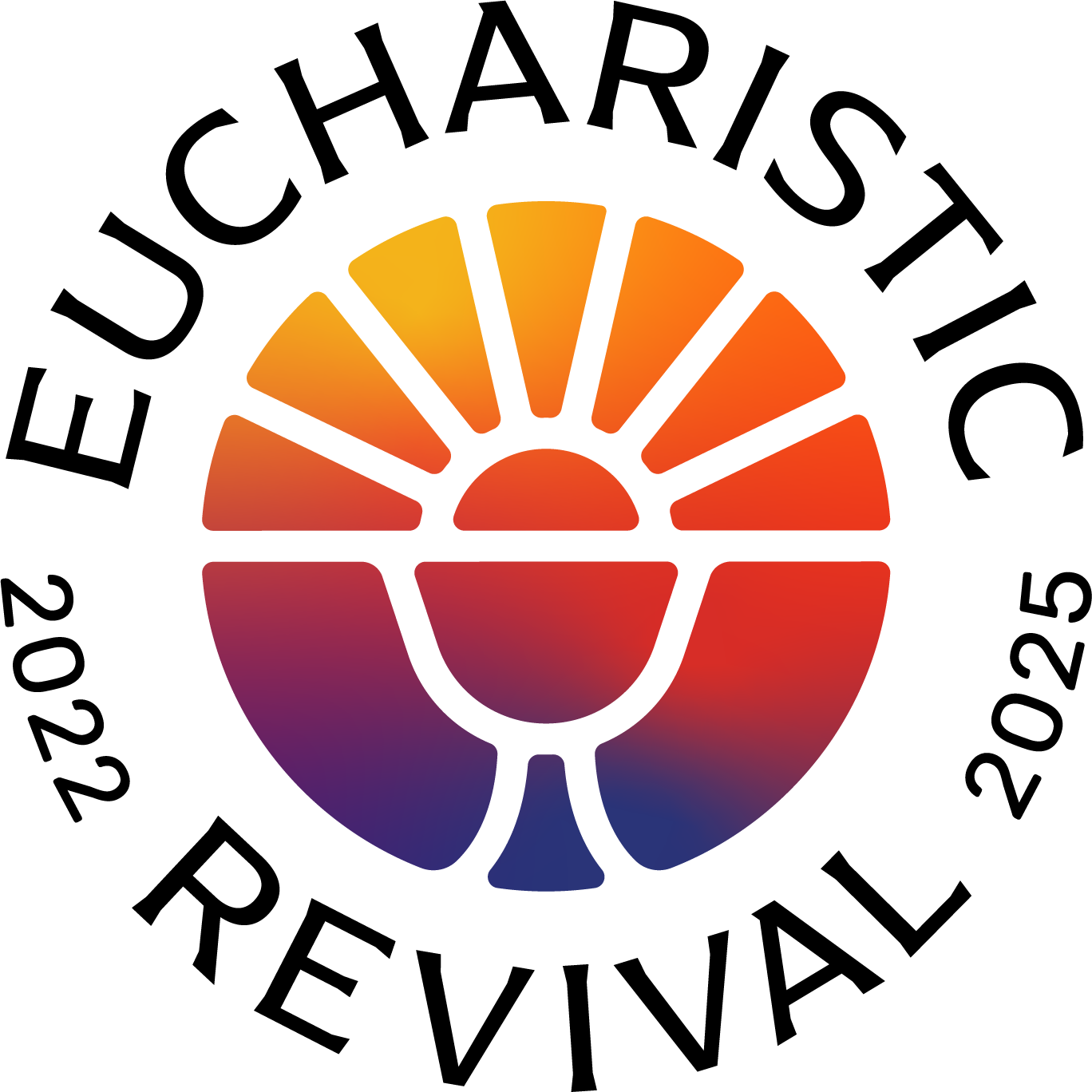A Dark Spot on the Moon
By Sean M. Wright
Born in 1192, St. Juliana of Liège (or of Mont Cornillon) entered religious life as a Norbertine canoness regular. Of her, Pope Benedict XVI wrote: “She is little known but the Church is deeply indebted to her, not only because of the holiness of her life but also because, with her great fervor, she contributed to the institution of one of the most important solemn liturgies of the year: Corpus Christi.”
In 1208, at the age of 16, Juliana experienced a vision of the full moon shining splendidly save for an area of darkness, described variously as a spot or as a diagonal stripe. According to Pope Benedict, “The Lord made her understand the . . . moon symbolized the life of the Church on earth; the opaque line, on the other hand, represented the absence of a liturgical feast . . . in which believers would be able to adore the Eucharist so as to increase in faith, to advance in the practice of the virtues and to make reparation for offences to the Most Holy Sacrament.”
Not the impulsive type, Sister Juliana experienced this vision for 20 years and became prioress of her convent before describing it to a devout priest, John of Lausanne, her confessor. A number of local theologians were consulted and all thought it feasible to set aside a feast day of liturgical thanksgiving for the Most Glorious Sacrament of the Altar.
 Together, Juliana and John composed an office — the Mass prayers — for the feast. Their enthusiasm induced Bishop Robert Thourotte of Liège to accept the concept. In 1246, he introduced the Feast of Corpus Christi to his diocese.
Together, Juliana and John composed an office — the Mass prayers — for the feast. Their enthusiasm induced Bishop Robert Thourotte of Liège to accept the concept. In 1246, he introduced the Feast of Corpus Christi to his diocese.
The beauty of this feast was not lost on the son of a cobbler, Jacques Pantaléon, who had become Archdeacon at the Liège cathedral and, later, Latin Patriarch of Jerusalem. Although he was not a cardinal, Pantaléon was elected Pope in 1261, taking the name Urban IV.
With the bull, “Transiturus de Hoc Mundo” (Aug. 11, 1264), Urban instituted Corpus Christi as a “feast of precept” viz., taking precedence over any other liturgical celebration, even one of highest rank. He assigned its celebration to the Thursday following the Octave of Pentecost, the Thursday following Trinity Sunday. This was the first time a pope imposed a feast to be observed by the Universal Church. (In 1969, Pope St. Paul VI permitted episcopal conferences the option to celebrate Corpus Christi on the first Sunday after Trinity Sunday).
With Pope Urban’s wholehearted advocacy, magnificent processions soon were held throughout Europe. Homes and businesses were colorfully decorated with bunting, banners, pennants and flowers. As flower girls strewed petals on the cobblestones and acolytes swung their thuribles raising clouds of incense, the townsfolk, dressed in their best clothing, lined both sides of roadways. They sang exuberant hymns of thanksgiving, adoration and praise.
All across the continent, as local pastors or bishops approached beneath a canopy, walking, or sometimes riding in a special carriage, wrapped in beautiful copes and humeral veils they held aloft monstrances containing the Eucharistic Jesus for all to see. When Jesus approached, the people cheered and crossed themselves. And, in the midst of wondrous, lengthy waves of genuflection, the inhabitants of every hamlet, every town and every city in Europe came to pay homage to their Savior and Lord.
Gratified to learn of all the love and adoration directed toward the Sacred Host, Pope Urban declared, “Indeed we grasp the other things we commemorate with our spirit and our mind, but this does not mean that we obtain their real presence. On the contrary, in this sacramental commemoration of Christ, even though in a different form, Jesus Christ is present with us in His own substance. While He was about to ascend into Heaven He said ‘And lo, I am with you always, to the close of the age’” (Matthew 28:20).
Sean M. Wright, MA, is a Master Catechist for the Archdiocese of Los Angeles and a member of the RCIA team at Our Lady of Perpetual Help parish in Santa Clarita. An Emmy nominee, he answers comments at Locksley69@aol.com.
1321